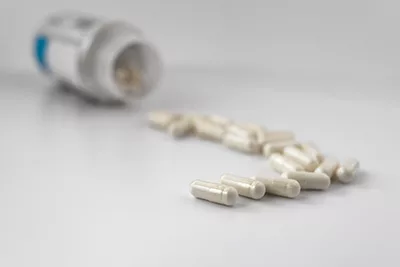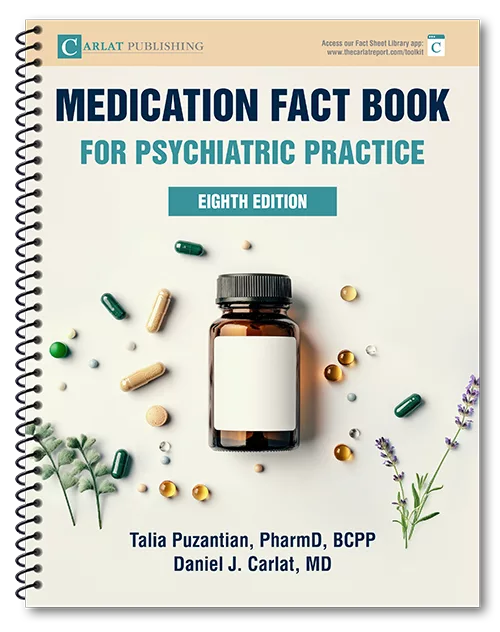Lithium Orotate

Chris Aiken, MD. Editor-in-Chief, The Carlat Psychiatry Report. Assistant Professor, NYU Langone Department of Psychiatry. Practicing psychiatrist, Winston-Salem, NC.
Dr. Aiken has no financial relationships with companies related to this material.
Your patient is a 24-year-old woman with bipolar I disorder who recovered on lithium. She learned about a “nontoxic” version of lithium on TikTok, called lithium orotate, and wants to switch to it.
Lithium is available as two salts, carbonate and citrate, but a third preparation is gaining popularity as an over-the-counter (OTC) supplement: lithium orotate. We rarely give a second thought to the salts that medications are bound to, which are there to stabilize the drug in liquid (ie, citrate) or solid (ie, carbonate) form. Salts can alter pharmacokinetics. For example, lithium citrate has a lower peak than its carbonate cousin, but these differences are trivial. So why does lithium orotate stir up such controversy?
Lithium orotate was developed in the 1970s by Hans Nieper, who hoped it would spare patients some of lithium’s physical side effects by shunting more of the medication into the brain and away from the body. That theory did not pan out in early experiments, and a rat study brought lithium orotate’s career to a sudden end. In this study, lithium orotate led to worse renal outcomes than carbonate despite comparable serum levels (Smith DF and Schou M, J Pharm Pharmacol 1979;31(3):161–163).
When the researchers looked into rats’ bodily organs, they found higher cellular levels of lithium in the animals treated with lithium orotate. This suggests that lithium orotate might require lower serum levels to achieve the same effects as lithium carbonate.
That theory was recently tested in a mouse model of mania. After inducing mania with amphetamines, researchers were able to treat the mice with lower serum levels of orotate than carbonate. Unlike the 1979 study, these mice had lower rates of renal problems with orotate than carbonate, as well as less polydipsia and fewer thyroid problems (Pacholko AG and Bekar LK, J Psychiatr Res 2023;164:192–201).
One mouse study does not justify human use, especially with lithium’s narrow therapeutic window. Despite this new evidence of safety, lithium orotate caused toxicity symptoms at surprisingly low serum levels in a 2007 case report. An 18-year-old woman presented with severe tremor and vomiting after taking 18 lithium orotate tablets (equivalent to 441 mg of lithium carbonate). Her serum level was only 0.3–0.4 mEq/L (Pauzé DK and Brooks DE, J Med Toxicol 2007;3(2):61–62).
It will take years to figure out the appropriate serum levels for lithium orotate, and by then, a new lithium salt may have stolen orotate’s aura. In 2023, the FDA greenlit trials of LiProSal, a branded lithium that—like orotate— aims to distribute more medication to the brain and less to the body. LiProSal pairs lithium with salicylate and the amino acid proline, and trials are underway in bipolar disorder, PTSD, and dementia.
Meanwhile, patients have ready access to lithium orotate online. Here’s what you need to know about it: Lithium salts are dosed by the total weight of the salt, of which lithium makes up only a small portion. To convert from lithium carbonate to orotate in terms of mg of elemental lithium, multiply by 4.9 (eg, 300 mg lithium carbonate = 1,960 mg lithium orotate). Keep in mind that bioavailability may differ and that what’s on the label of the orotate product may not be accurate or standardized, given these products are unregulated. Most lithium orotate products are sold as a daily dose of 120 mg (equal to 24 mg lithium carbonate), but some list the amount of pure lithium instead (5 mg).
Lithium orotate is unlikely to cause harm at these microdoses and may do some good. Elevated lithium in the drinking water is associated with lower rates of suicide and psychiatric problems (Eyre-Watt B et al, Aust N Z J Psychiatry 2021;55(2):139–152). The 5 mg of lithium in the orotate supplements is similar to the amounts found in areas with lithium-rich water. One such area is Mexico, which registers 2–8 mg of lithium/day at a daily intake of 3.7 L of water, equivalent to 10–42 mg/day of lithium carbonate (Mahmudiono T et al, Rev Environ Health 2023;39(4):667–677).
I wouldn’t recommend orotate for treatment, but I wouldn’t dissuade a patient who wants to take these low doses on their own, and there is one scenario where it may prove useful. Patients’ fears of lithium are greatly out of proportion to their experience with the medicine (McKeown L et al, J Psychopharmacol 2022;36(5):557–565). For those who are lithium-phobic but drawn to orotate, the OTC version might help them get comfortable with treatment. After a month of orotate, we could switch to 150 mg carbonate and move up from there (but never go up on orotate).
CARLAT TAKE
Lithium orotate is not ready for practice. It appears to enter the brain and tissues at a greater rate than conventional lithium, and we have no idea what its safe dosing range is—or how to monitor for toxicity.

Newsletters
Please see our Terms and Conditions, Privacy Policy, Subscription Agreement, Use of Cookies, and Hardware/Software Requirements to view our website.
© 2026 Carlat Publishing, LLC and Affiliates, All Rights Reserved.


_-The-Breakthrough-Antipsychotic-That-Could-Change-Everything.webp?t=1729528747)



